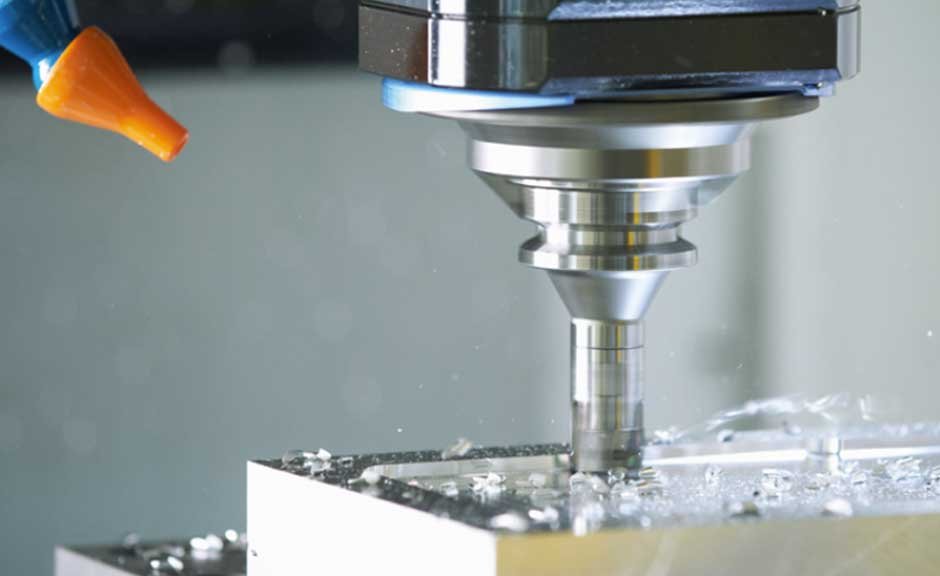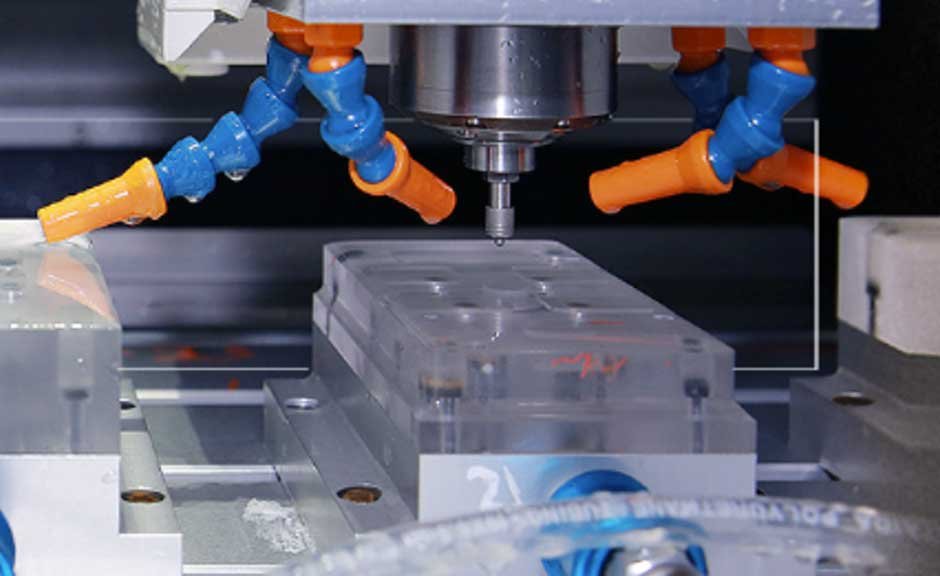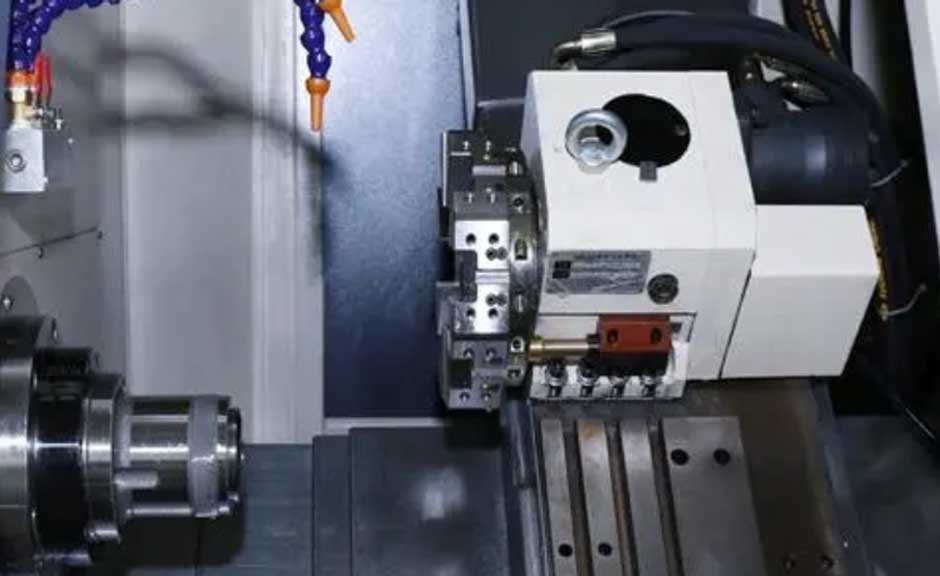CNC machining has its roots in the early 20th century with the development of numerical control (NC) systems that used punched cards to automate machine tools. The first true CNC machine, the Kearney & Trecker Milwaukee-Matic, was introduced in the 1950s, revolutionizing manufacturing by enabling complex part production with computer-guided precision.
What is CNC Machining?
CNC machining services is a manufacturing process that employs computer-controlled machines to precisely shape and cut materials into customized parts and components. It relies on digital instructions to guide cutting tools, enabling high precision and automation in various industries.
The basic steps involved in CNC machining include:
Design: Create a 3D model of the part to be manufactured using Computer-Aided Design (CAD) software.
Programming: Generate a CNC program using Computer-Aided Manufacturing (CAM) software, which converts the 3D model into a set of instructions that the CNC machine can follow. This program defines toolpaths, tool changes, and cutting parameters.
Setup: Secure the workpiece in the CNC machine and load the CNC program into the machine’s controller.
Machining: The CNC machine follows the instructions in the program to precisely cut and shape the workpiece. This process involves various operations, such as milling, drilling, turning, and more, depending on the type of machine and the part’s design.
Quality Control: After machining, the finished part is inspected to ensure it meets the required specifications.
How does CNC Machining Works?

CNC machining involves computer-controlled machinery to remove material from a workpiece and relies on CAD and CAM software for instructions, enabling precise part production.
Design the Part:
The process begins with the design of the part or component that needs to be manufactured. This design is typically created using CAD software. The designer creates a 3D model of the part, specifying all the necessary dimensions, features, and geometries.
Create a CNC Program:
Once the part’s design is complete, a CNC programmer or machinist creates a CNC program using CAM software. This program includes all the instructions needed to manufacture the part.
The CNC program defines toolpaths, tool selection, cutting speeds, feeds, and other machining parameters. It essentially tells the CNC machine how to remove material to create the part.
Workpiece Setup:
The workpiece, which is typically a block of material (metal, plastic, wood, etc.), is secured in the CNC machine’s workholding device. This can be a vice, chuck, or fixture, depending on the type of machine and the part being manufactured.
Load the CNC Program:
The CNC program is loaded into the CNC machine’s controller. This is usually done through a direct connection, USB drive, or network transfer.
Machine Operation:
The CNC machine’s computer controller interprets the CNC program and sends signals to the machine’s motors and actuators. These signals control the movement of the cutting tool and the workpiece.
The machine tool, which may be a milling machine, lathe, router, or other specialized equipment, follows the toolpaths specified in the program, cutting, drilling, or shaping the workpiece as required.
Monitoring and Quality Control:
During the machining process, the operator or machinist may monitor the operation to ensure everything is running smoothly.
After the machining is complete, the finished part is removed from the machine and inspected to ensure it meets the required specifications. Any necessary quality control checks are performed.
Repeatability and Precision:
One of the key advantages of CNC machining is its ability to provide high precision and repeatability. The CNC machine can perform the same operations accurately and consistently, making it suitable for high-precision manufacturing.
Main Processes Of CNC Machining
CNC machining encompasses several main processes, each of which serves a specific purpose in creating finished parts or components. These processes are programmed into the CNC machine’s software to guide the cutting tools and operations.
The main processes of CNC machining include:
Milling:

CNC Milling is one of the most common CNC machining processes. It involves the use of a rotating multi-point cutting tool (known as a milling cutter) to remove material from a workpiece. The tool moves along various axes to create slots, holes, and complex shapes. There are different types of milling operations, including face milling, end milling, and contour milling.
Turning:

CNC Turning, also known as CNC lathe machining, is used to create cylindrical parts. A workpiece is rotated while a single-point cutting tool is moved parallel to the axis of rotation. This process is commonly used for producing parts like shafts, pins, and threads.
Drilling:
Drilling involves creating holes in a workpiece using a rotating drill bit. CNC drilling machines are equipped with various types of drill bits to produce holes of different sizes and shapes. This process is crucial in many manufacturing applications, from simple holes to more complex patterns.
Boring:
Boring is a process that enlarges or refines an existing hole in a workpiece. It is often used to achieve high precision in holes and is suitable for creating large-diameter or deep holes.
Tapping:
Tapping is a process used to create threads inside a hole. A tapping tool is used to cut threads into a pre-drilled hole, allowing screws or bolts to be threaded into the workpiece.
Grinding:
CNC grinding involves the use of abrasive wheels to remove material from a workpiece to achieve high precision and surface finish. It is used in applications where tight tolerances and smooth surfaces are critical, such as in the aerospace and automotive industries.
Wire EDM (Electrical Discharge Machining):
Wire EDM is a non-contact process that uses electrical discharges to remove material from a workpiece. It is particularly useful for cutting intricate shapes and hard materials. A thin, electrically charged wire is used to erode the material.
Plasma Cutting and Laser Cutting:
CNC machines can also be equipped with plasma cutters or laser cutters for precise and high-speed cutting of materials such as metal and composites. These processes are commonly used in industries like metal fabrication and sheet metal cutting.
Waterjet Cutting:
Waterjet cutting uses a high-pressure stream of water mixed with abrasive particles to cut a wide range of materials, including metals, ceramics, and plastics. It’s a versatile process known for its ability to cut without generating heat.
Routing:
CNC routers are used for shaping and cutting materials like wood, plastics, and composites. They are commonly used in woodworking, sign-making, and the production of intricate designs.
Advantages of CNC Machining
High Precision: CNC machines can achieve extremely tight tolerances, often in the range of micrometers, ensuring that parts and components are manufactured with exceptional accuracy and consistency.
Repeatability: CNC machines can produce identical parts with consistent precision, which is essential for quality control and manufacturing large quantities of components.
Complex Geometries: CNC machining is capable of creating intricate and complex shapes and features that would be difficult or impossible to achieve with traditional machining methods.
Versatility: CNC machines can work with a wide range of materials, including metals (aluminum, steel, brass), plastics, wood, composites, and more, making them suitable for diverse applications.
Automation: CNC machining is highly automated, reducing the need for extensive manual labor. Once programmed, CNC machines can run continuously, increasing efficiency.
Customization: CNC machining allows for the production of custom parts and prototypes. Design changes can be easily accommodated by modifying the CNC program.
Improved Efficiency: CNC machines operate at high speeds and with consistent precision, leading to improved production efficiency and reduced lead times.
Reduced Scrap: The precision of CNC machining results in minimal material waste, reducing costs associated with raw materials.
Multi-Axis Capability: Many CNC machines have multiple axes, allowing for simultaneous movement in multiple directions. This capability enhances the machining of complex shapes and surfaces.
Tooling Flexibility: CNC machines can be equipped with various cutting tools, including end mills, drills, reamers, and more, making them adaptable to a wide range of tasks.

